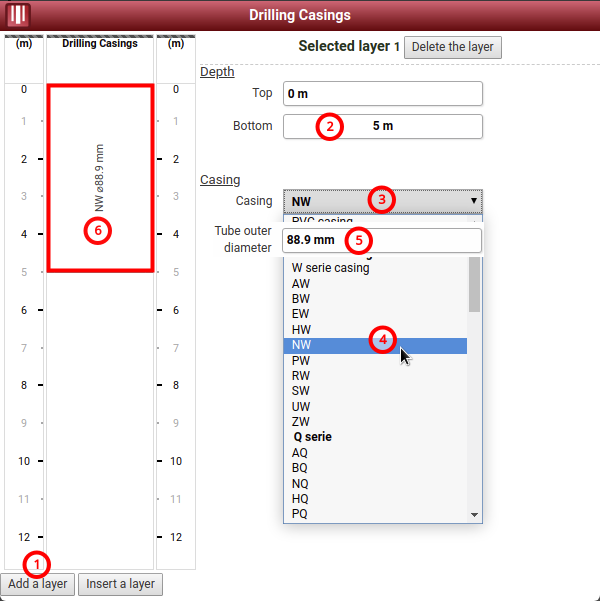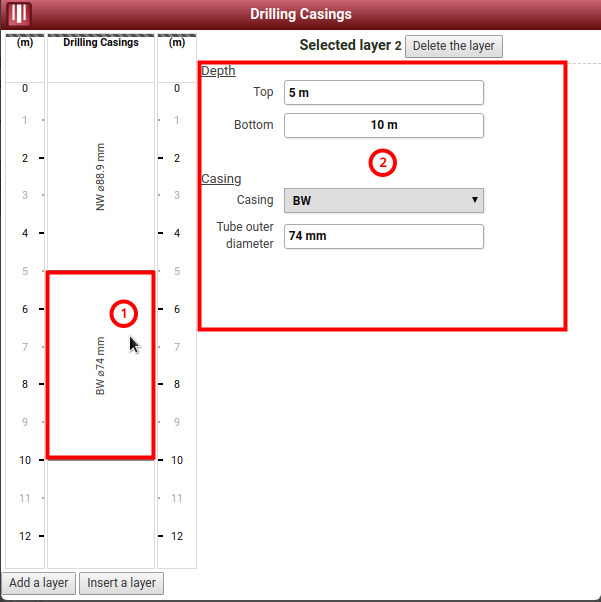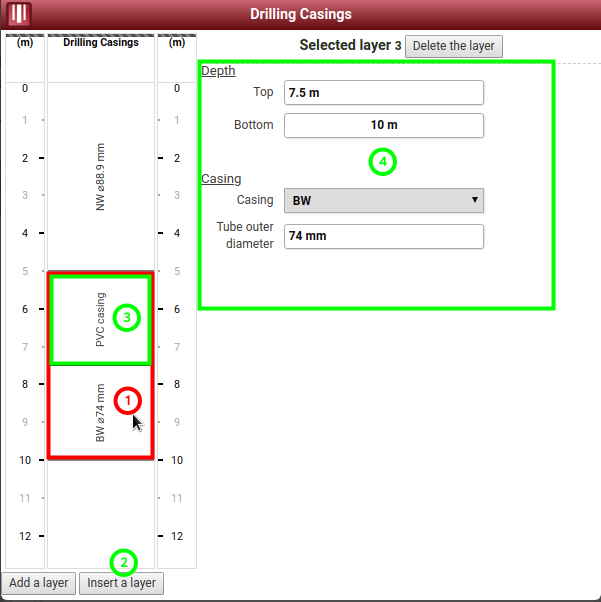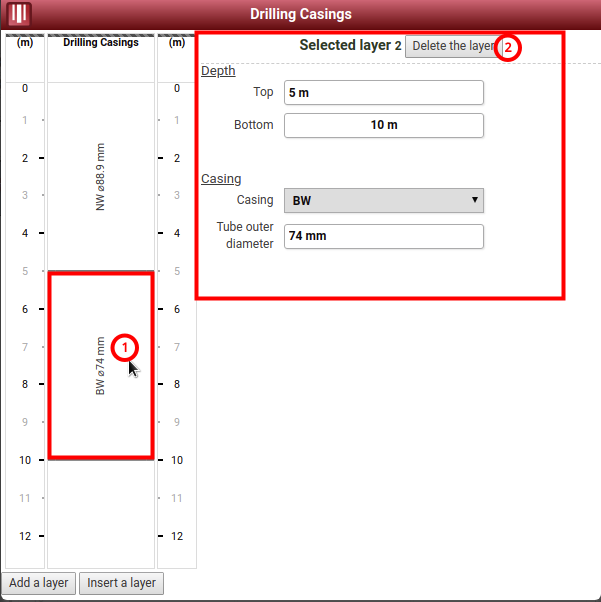Drilling casings
Tubing temporarily inserted into a borehole. Casing is used, e.g. to stabilise the borehole, to prevent the loss of flushing medium to the surrounding formation, or to prevent cross flow between different groundwater horizons.
The list of casing types proposed in Geo-log 4 is essentially based on the standard NF EN ISO 22475-1, Sampling methods and groundwater measurements, C.2 Drill rods and casing.
Creating drilling casings record
To create a new record of Drilling Casings see Creating a record.
Representing drilling casings

(1) Select a Drilling Casings record (e.g. F1)
(2) Select the Tracks template to complete (e.g. DOCUMENTATION)
(3) Select Drilling casings in Tracks list
(4) Click ![]() to add Drilling casings track
to add Drilling casings track
(5) The track Drilling casings is displayed
(6) Click Save to save changes to the current model
Entering drilling casings

(1) Place the cursor at the right end of Drilling Casings track header.
Click ![]()
The form Drilling casings allows the creation of a stack of layers. Each layer defines a particular drilling casing.
Creating a drilling casing

(1) Click Add a layer to create a new layer
(2) Change the Bottom Depth of the layer (e.g. 5 m)
(3) (4) Select the Casing used in the layer (e.g. NW)
(5) Enter Tube outer diameter (e.g. 88.9 mm)
(6) The casing is displayed in the layer
Editing a drilling casing

(1) Click the layer to modify
(2) Modify the characteristics of the drilling casing
Inserting a drilling casing

(1) Select the layer above which you want to insert a new layer
(2) Click Insert a layer
(3) A new layer is inserted into the upper half of the initial layer
(4) Enter information of the inserted layer
Deleting a drilling casing

(1) Click the layer to remove
(2) Click Delete the layer
Saving drilling casings
Drilling casings are automatically saved when you click outside of the form.